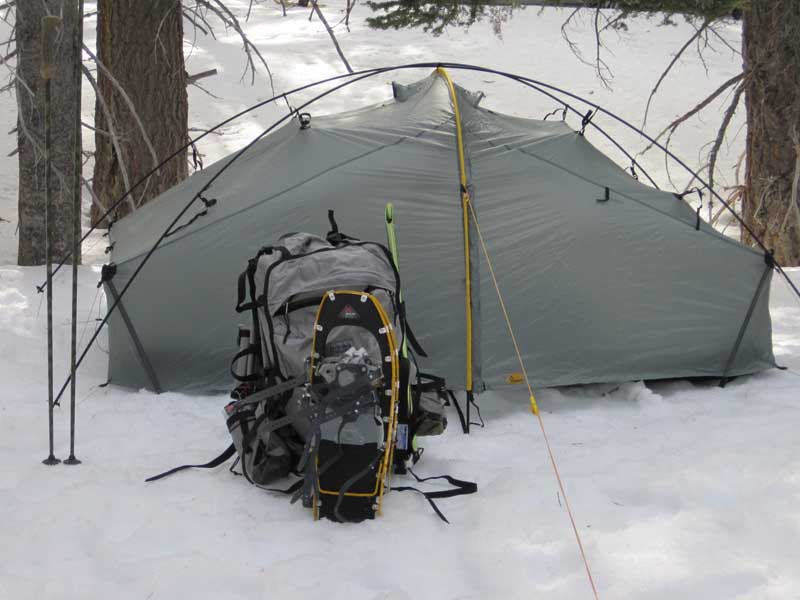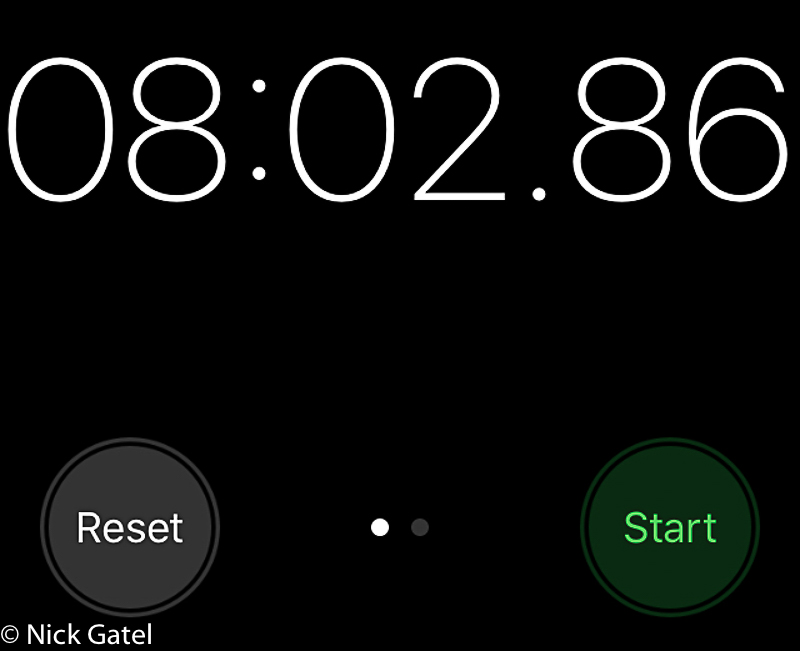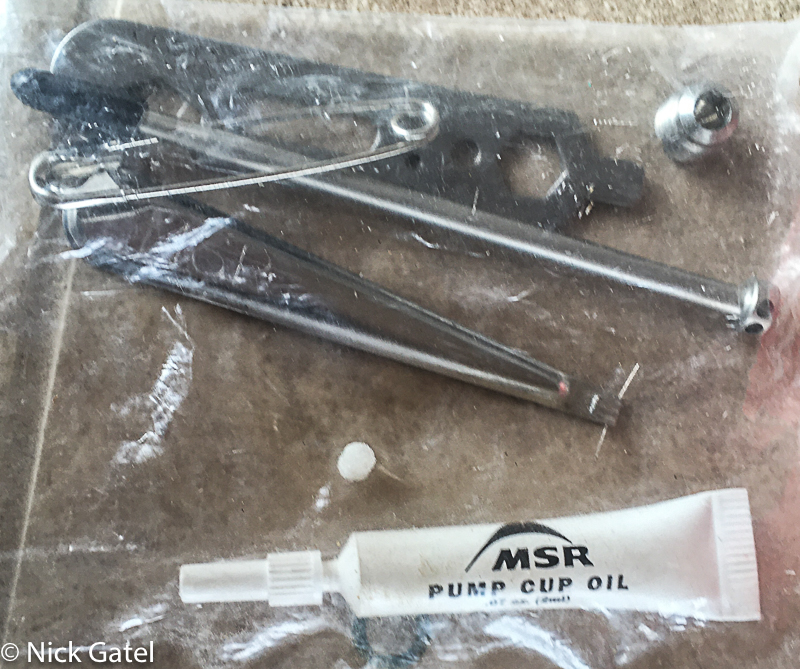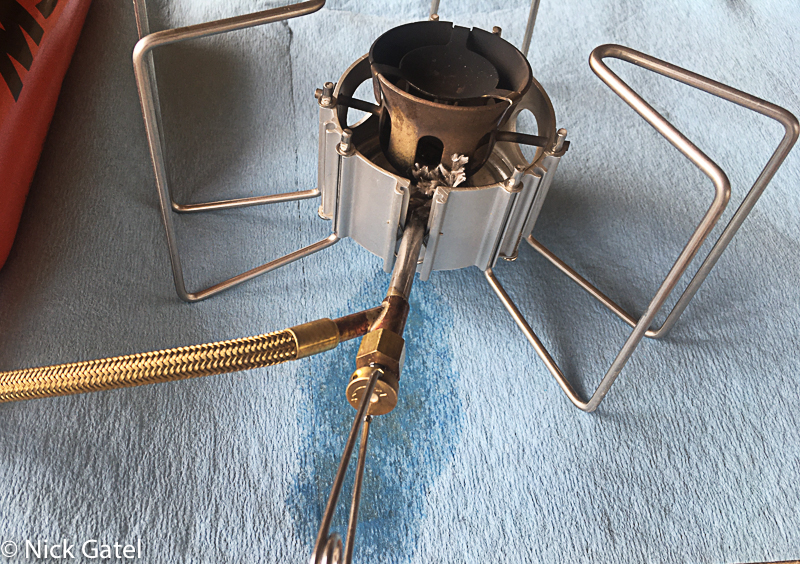Why did I buy this stove in the first place? Was it because this stove…
- can use white gas, automotive unleaded gas, diesel, kerosene or even aircraft jet fuel?
- can simmer better than just about any backpacking stove on the market?
- can handle big heavy, wide pots up to 10 inches in diameter?
- is so sturdy?
Is this the stove for you?
This article concludes my series on liquid stoves where I reviewed the Svea 123 and the MSR WhisperLite. If you are in the market for a new stove, you might want to take a look at the article about the MSR WindPro II, especially the section on how stoves work.
MSR DragonFly Overview
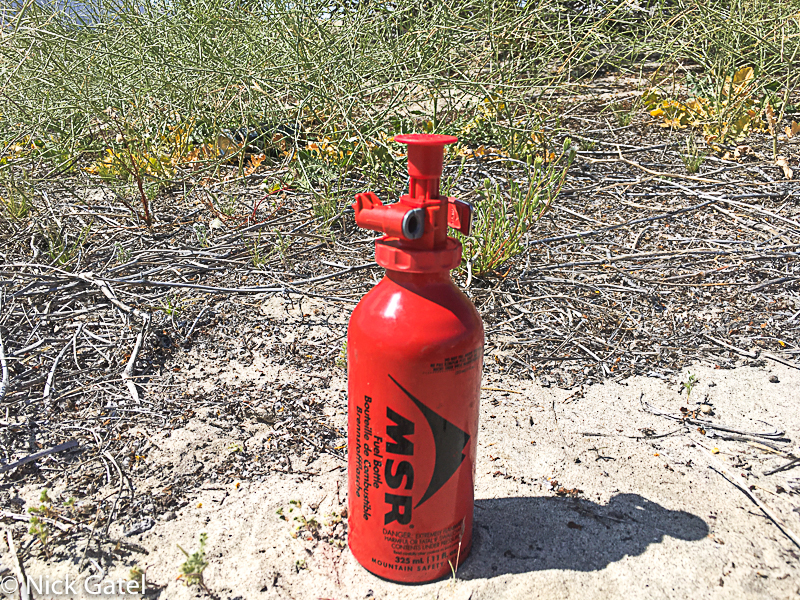
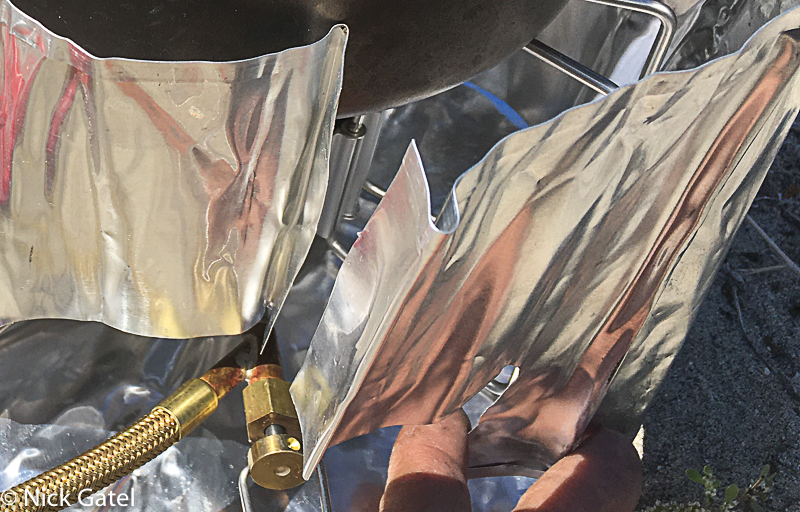
I have to admit this was an impulse purchase. I rarely buy this way. Usually, when I purchase almost anything, I give it considerable thought and make sure it will do what I need it to do – especially when considering backpacking or camping gear.
When I bought it, the stove was on sale at a huge discount. Huge discounts are marketing strategies to get us to psychologically primed to buy something we may not really need. Did this work on me? Perhaps.
If I were to travel the world, relying on this stove, it would be seriously advantageous to have the option of using all these different kinds of fuel. I am sure it would be difficult to find white gas or a gas canister of IsoPro fuel in a small village in Mongolia. But I’ll never go to Mongolia or any country where I’ll be in this situation.
Another consideration is weight. This stove is heavy by backpacking standards. The stove, pump, and windscreen weigh in at 16 1/8 ounces. Here’s weight chart to several stoves, including the DragonFly:
Do I need the ability to simmer gourmet meals in the backcountry given I usually just boil water for freezer bag cooking to prepare my meals?
Do I need the “legendary” reliability of MSR stoves?
When I Use the MSR DragonFly
I only take it on winter trips when the nighttime temperatures will be below freezing and I expect a lot of snow, especially when I anticipate it will be snowing on me. These are shorter trips with long nights. They are also trips when I actually cook my meals. Cooking meals requires more clean up and the abundance of snow allows for plenty of water, usually meaning I have to melt snow for water. The DragonFly, despite its weight is an ideal stove for these kinds of trips.
Simmer Ability
Two Control Valves
There are a couple reasons why this stove simmers so well. First is there are two control valves instead of the single valve most stoves had. One is part of the fuel bottle pump, and a secondary valve near the stove. In the picture below, the red handle on the pump (left) is used only to open and close the pressurized fuel in the bottle, which acts as the fuel tank. The control valve at the end of the braided hose (right side of picture) is then used to adjust the flame after the bottle is pressurized.
This is much different compared to all of the other MSR stoves, no matter what kind. All of these have just one control valve to adjust pressure and thus flame height. Which brings up another point. All MSR liquid stoves use the same pump, that is any pump you buy will fit the XGK-EX, WhisperLite, WhisperLite International, and WhisperLite Universal except the DragonFly. There is a stove-specific pump for the DragonFly and it cannot be used on any other stove. A replacement DragonFly pump can be identified by its color – red.
Pot Support Height
The second factor for excellent simmering is the pot support height. The DragonFly pot supports are much higher than other MSR liquid stoves and the canister gas WindPro.
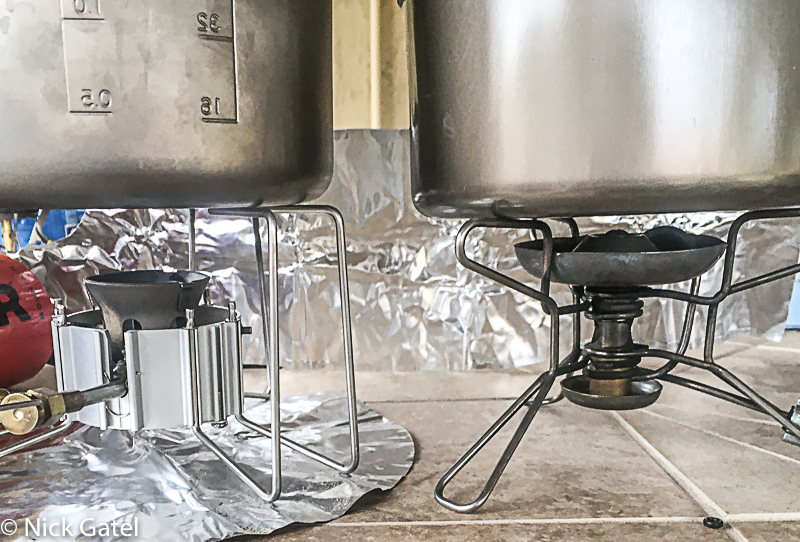
BTUs
The DragonFly puts out a max of 8,700 BTU per hour. (see this post on more about BTUs). Compare this to these stoves:
- Svea 123 liquid fuel stove about 4,800 BTU per hour
- MSR WhisperLite liquid fuel stove about 9,500 BTU per hour
- MSR WindPro II IsoPro gas stove up to 10,000 BTU per hour.
Efficiency
As I wrote in my review of the WindPro II,
There are two things I see measured when it comes to stoves. How long to boil 1 liter of water, and how long does the fuel last (burn time per ounce of fuel, or some other arbitrary metric). In all honesty it’s a bunch of crap. You can’t trust the manufacturers (except the maker of the Svea 123 who states the stove boils a liter of water in 7 minutes). Can we trust Internet people, like me, reviewing a product? Are they matching the perfect pot to each individual stove? And so on.
As an experiment I decided to time required to boil a liter of water in a fairly wide and shallow pot, on a bit of a windy day. Now here is a question. What does boiling water mean? Scientifically 212° F is the boiling point of water. Wikipedia states:
The boiling point of a substance is the temperature at which the vapor pressure of a liquid equals the pressure surrounding the liquid and the liquid changes into a vapor.
For most backpackers, we just need to get the water hot enough to kill germs and such. 150° F is sufficient to do this. So I normally heat my water to around 180° F, when the little bubbles begin to float to the top.
I live at 500 feet above sea level. Filling the pot with 50° F tap water and an ambient temperature of 56° F, I placed the pot of water on the DragonFly with the windscreen in place. I left the lid off the pot, so I could insert a thermometer without touching the sides or bottom of the pot itself. The flame was adjusted to a high setting, but not too high.

Opps, 8 minutes and 2 seconds.
MSR’s technical specifications states the DragonFly will boil water in 3.5 minutes using white gas. I have found all of MSR’s boil times are way off. Nowhere on MSR’s website can I find out how they came up with this number, nor what conditions/pots they use to arrive at this specification. The famous backpacking author, Colin Fletcher often bemoaned this strange discrepancy between manufacturer’s specs and real world tests. but it isn’t a deal breaker.
Another interesting aspect of the DragonFly is the burner. The stove uses a flame spreader similar to the Svea 123 (and also MSR’s expedition stove the XGK-EX).
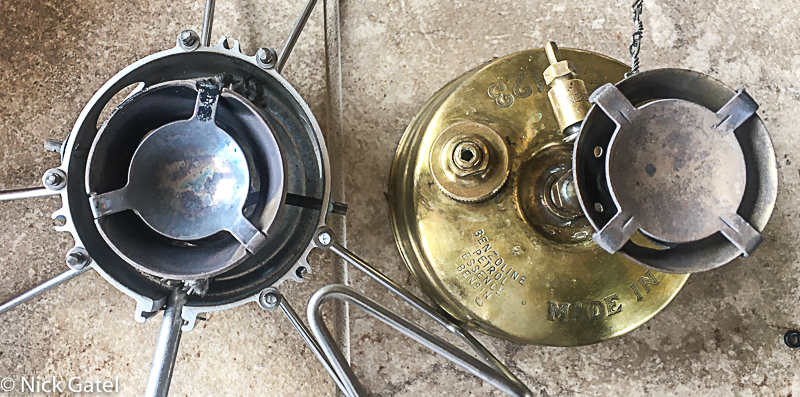
The DragonFly Expedition Kits comes with a replacement flame spreader. See upper left in the picture below:
Let’s compare the DragonFly’s burner (flame spreader) to the MSR WhisperLite. The DragonFly was introduced around 1998; the WhisperLite in 1982.
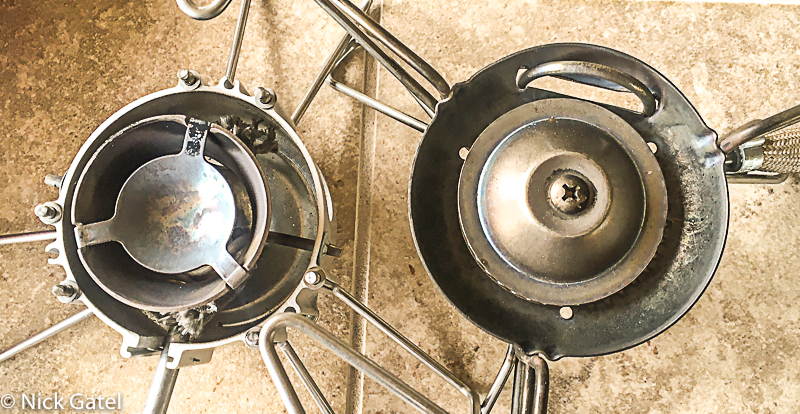
The WhisperLite (on the right) runs much quieter than the DragonFly. Could the different type of burners cause this?
Operation
To operate, the stove first has to be primed. Just like the WhisperLite, the pump has to pressurize the bottle with 20-30 strokes. With the pump control valve completely opened, open the secondary control valve until about 1/2 spoonful of fuel fills the priming bowl. Turn the secondary control valve off and light the wick. Just before the priming flame burns out, turn on the stove burner using the secondary control valve.
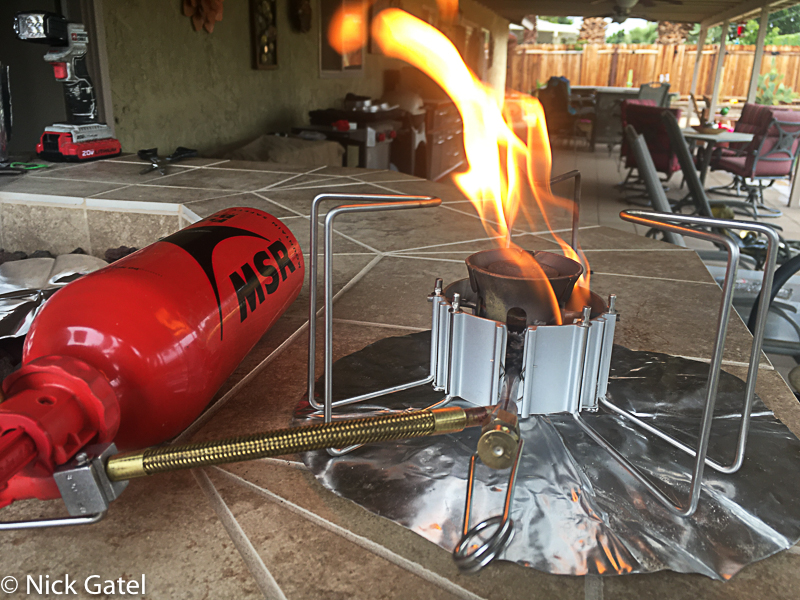
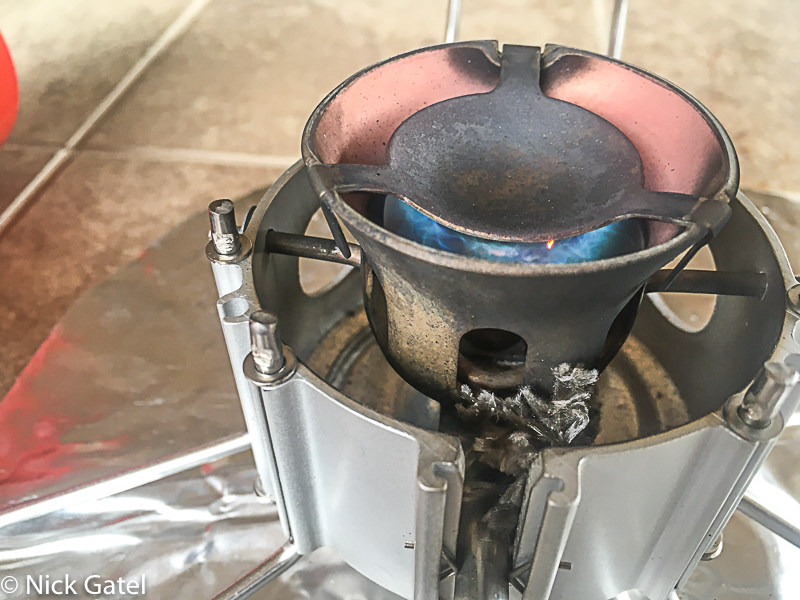
Multi-Fuel Capability
As I noted earlier, the DragonFly can use several kinds of stove fuel to include:
- white gas
- automotive unleaded gas
- diesel
- kerosene
- aircraft jet fuel
The stove comes ready to use with the “gas” jet installed (DG jet). The small parts kit that comes with the stove includes a “DK” for use of Kerosene, diesel, or jet fuel. With the gas jet you can use white gas or unleaded automotive gasoline. Automotive gas contains all kinds of nasty additives and really should be avoid if at all possible. The Owner Manual states that automotive fuel may shorten the life of the stove (see below).
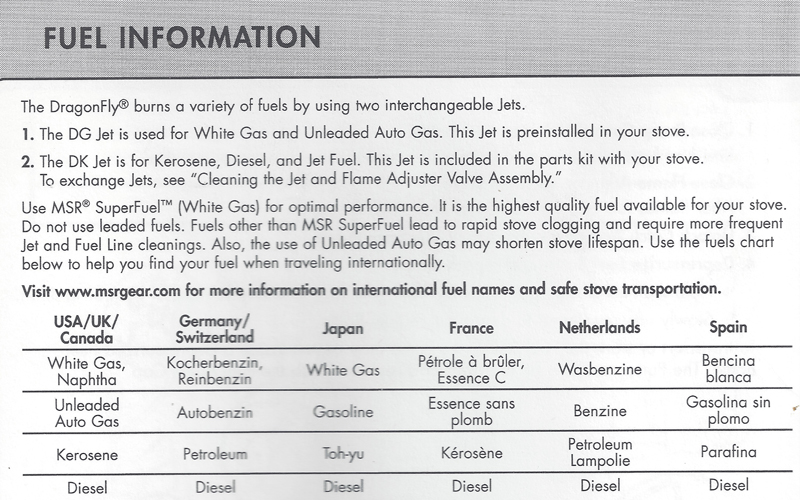
Cleaning the Jet
Just like the WhisperLite, the DragonFly comes with a “shaker jet.” After each use of the stove, let it cool off, and just shake the stove up and down to clean the jet. This should keep the jet clean when using when using white gas. For all other fuels, a wire jet pricker is included in the small parts kit for cleaning the jet in addition to shaking the stove. See my post on the WhisperLite stove for more details on using a wire picker.
Noise
The stove is loud. Loud is a relative term. If you remember, I mentioned both the DragonFly and the Svea 123 are similar, as they both use a flame spreader. The Svea 123 is a noisy stove too, relatively speaking. I suspect the design of the flame spreader versus a more conventional burner causes this. The noise doesn’t both me. I mention this because it seems to be a common complaint about the DragonFly.
Reliability
Yes, MSR stoves are very reliable, as far as liquid gas stoves go. As I have shared many times, I do the required maintenance on all my gear, and I do the required annual maintenance on my MSR stoves as suggested by the manufacturer.
The DragonFly is the only stove I have ever had to “repair.” It wasn’t a field repair though. Before I go on any backpacking trip, I test the stove I will be taking. This seems like a common sense thing everyone would do, but apparently it isn’t.
The repair I needed to do was a leak from the secondary control valve, which was leaking. Not a big deal, just a couple of O-rings to replace. These O-rings are not included in the small parts kit that comes with the stove, but do come in the MSR Annual Stove Maintenance Kit and the DragonFly Expedition Kit. I decided to do the complete annual maintenance, since it was about time.
So if you decide to buy a DragonFly, go ahead and buy the maintenance kits.
Gear Tip
To test a stove for leaks, place it on a blue shop towel. White gas and IsoPro are clear and often a leak will drip onto the towel making it easier to detect and find. Below the paper towel is wet from the flame control valve leaking.
DragonFly Repair
I’m not going to document the entire annual maintenance procedures. The instructions with the kits explain what to do, plus there are plenty of videos on YouTube. Instead, I’ll just go through the process of repairing the control valve leak.
First step was to remove the control valve. A tool is included is the small parts kit that comes with the stove. The MSR Annual Maintenance Kit and the MSR DragonFly Expedition Kit also come with the tool.
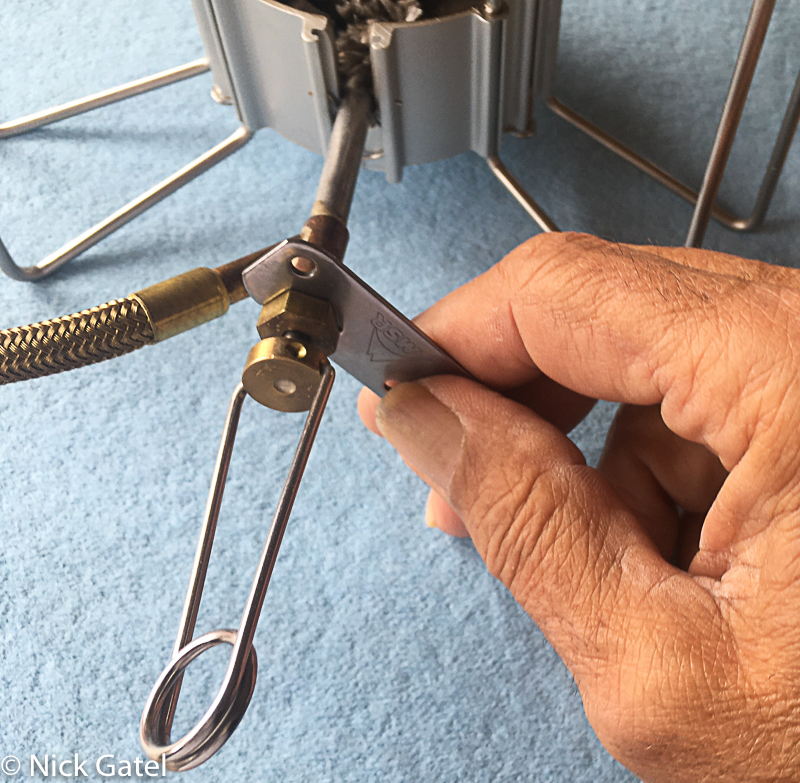
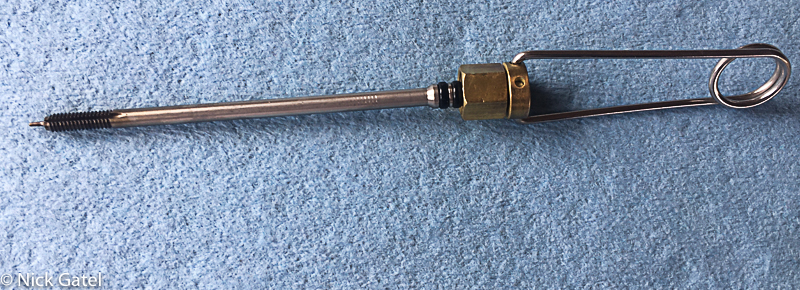
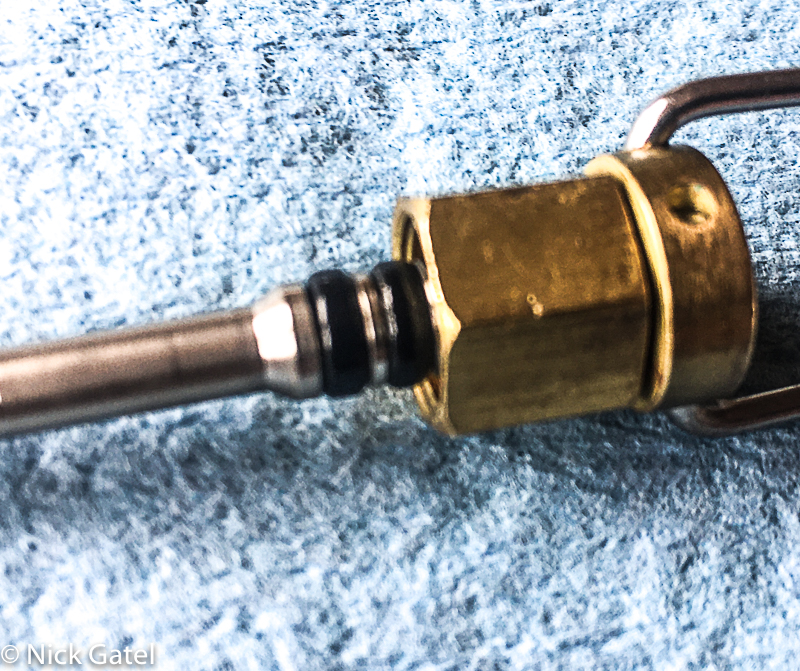
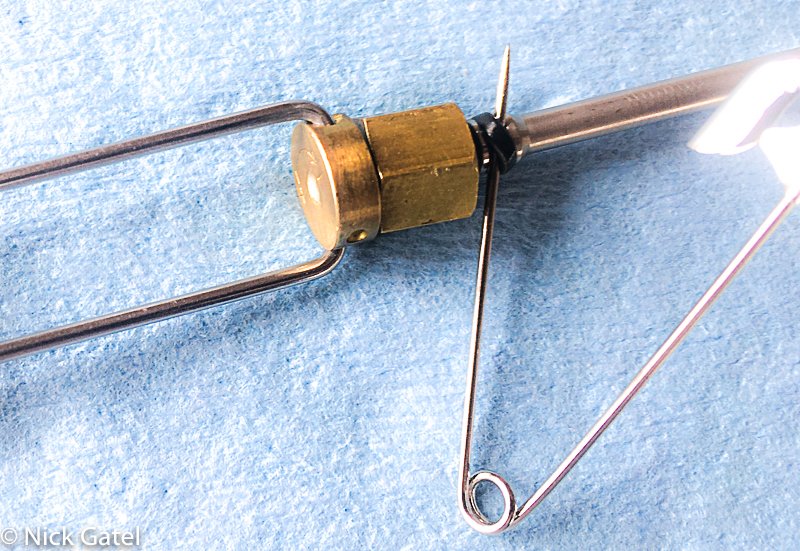
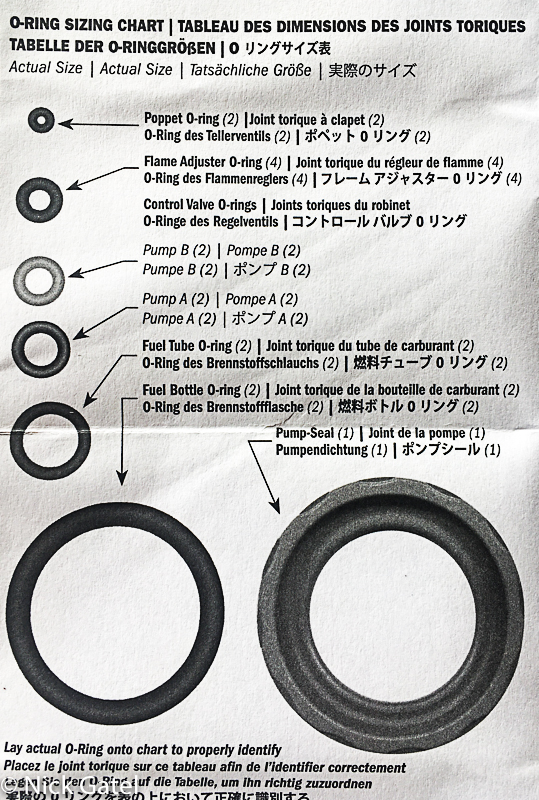

Summary
The MSR Dragon makes a great winter stove when camping in snow and needing to melt snow for water. It also makes a great stove for car camping. If you cook your outdoor meals and need a stove that has excellent simmering capabilities, you may not be able to find a better stove than the DragonFly. If weight is your primary concern, then this isn’t the stove for you.
This website may be compensated for linking to other sites or for sales of products. As an Amazon Associate I earn a small fee from qualifying purchases at no additional cost to the purchaser.




